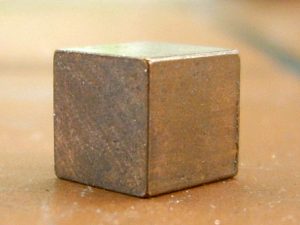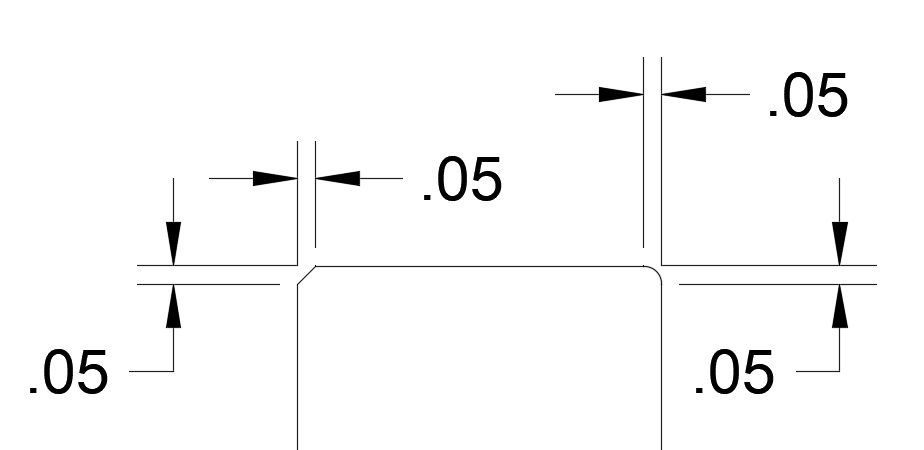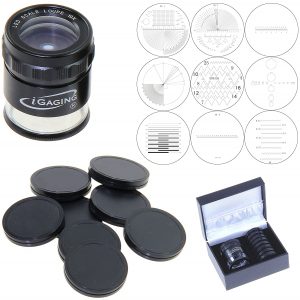What is a break edge?

A break edge means the removal of material, usually in the form of a chamfer or radius to remove the sharp edge.
Machining a surface will often leave a corner which can be dangerous for both the part and the part handler. Many times there will be a burr (raised piece of material), left on the edge which can be razor sharp. Using a deburring tool can break the edge to remove the sharp
A broken edge is usually specified as a maximum value or with no value at all. If no value is specified, the break edge has not been constrained sufficiently.
A break edge callout with no maximum size referenced would normally be assumed to be approximately .005-.010” though in some instances it could be larger.
What does a break edge look like?
Break edge on a physical part
In the brass cube below, notice how the corners have all the sharp edges removed. This is an example of a break edge.

Break edge on a blueprint
Break edge symbol
There is no GD&T symbol for a break edge. Break edges are also not referenced in the engineering drawing standard ASME Y14.5.
Break edge callouts are specified directly on the drawing to reference a certain surface or as a note e.g. “Break all sharp edges”.
At times, the break edge specification may be contained in the general tolerance block such as shown below.
Break edge note example

How to make a break edge
Break edge on wood
Using 180 grit fine sandpaper is the easiest way to create a break edge on a wooden workpiece. This can also be used together with a block plane to chamfer the edge and then soften it with a light sanding.
Break edge on metal
Because metal tends to be more durable, you have more choices for creating a break edge on your piece of metal.
You can use:
- A chamfer deburring tool which is a specialty tool designed to remove burrs from the edges of parts
- A file to knock the edge off a part
- Sandpaper
- A grinding wheel
- A rotary tool such as a Dremel
Break edge on glass
To create a break edge on a piece of glass, use one of the following:
- Diamond file
- Grinding wheel
- Rotary tool with diamond wheel
How to measure a break edge
Which measuring tools to use
The size of a break edge is measured the same as a standard chamfer or radius. If a measurement is required, a pocket comparator or eye loupe with a reticle are the most common inspection tools to use.
An optical comparator with or without an overlay could also be used. See the examples below to better understand how the size of a break edge would be determined.
How to measure the break edge based on your blueprint

On the left is a chamfered break edge. The size is measured from the left edge of the part to the intersection of the break edge and the top of the part. This is done in both the x and y directions (up and down, left and right).
On the right is a break edge created by a radius. The same measurement technique applies with the exception that the intersection would now be called the tangent point or point where the radius meets the straight edge.
Break edge compared to similar features
Break edge vs chamfer
The difference between a break edge dimension and a chamfer dimension is generally in the tolerancing of the two. A chamfer is usually thought of as being toleranced in a way that places tighter constraints on the feature.
Often a chamfer callout will have a tolerance associated with the angle and a break edge will not.
Break edge vs radius
A break edge can be a radius. Many times, the person or company machining the part will round the edge using a variety of techniques including tumbling, specialty tools or even sandpaper.
Want to learn more?
GD&T is a complicated subject and understanding it correctly can be the difference between a perfect part and scrap.
The best way to learn GD&T is from experienced teachers who can break down the material into manageable pieces.
Luckily, we know someone.
And MachinistGuides.com readers get an exclusive discount on training!
Related Articles
For more information see these related articles:

